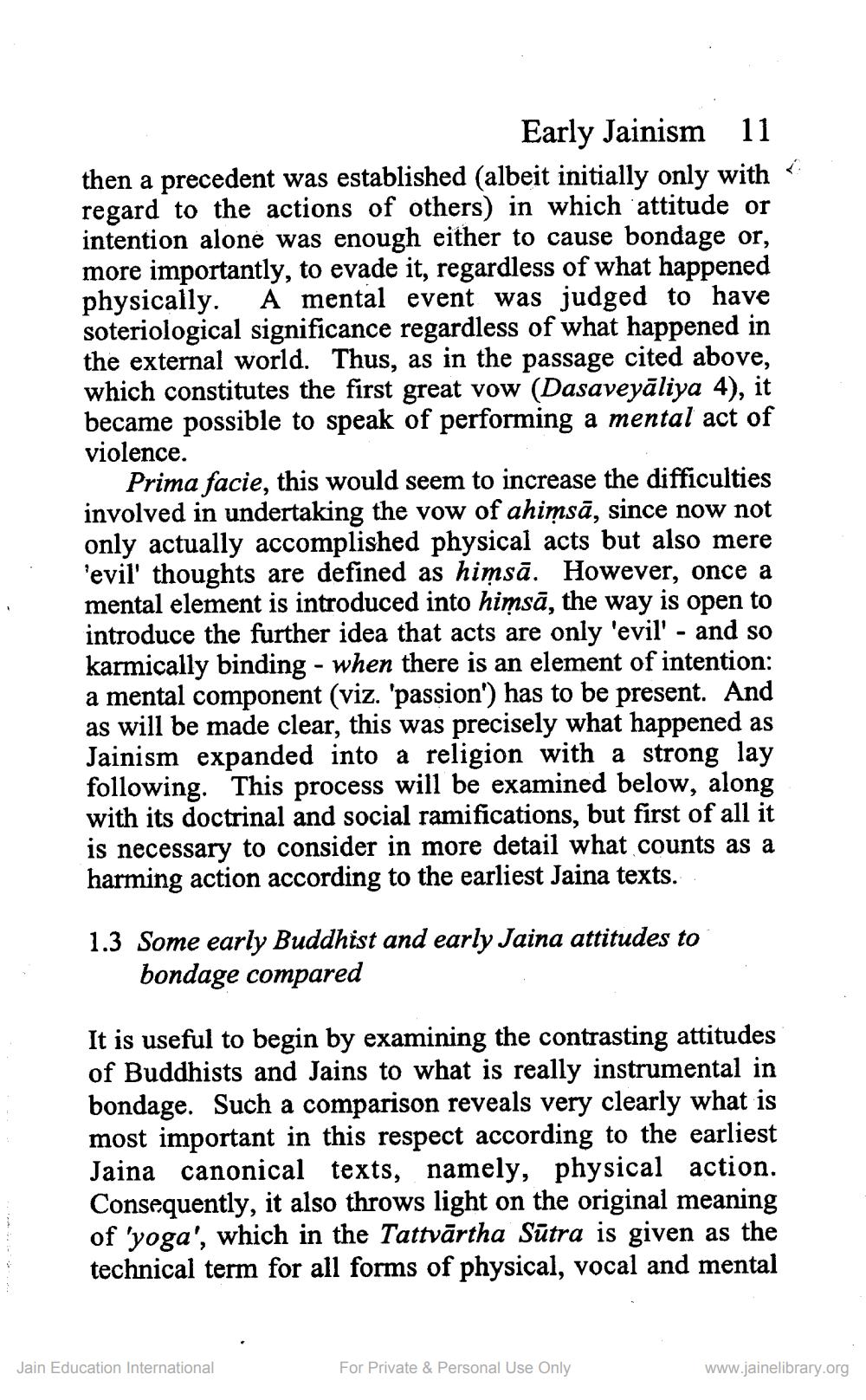________________
Early Jainism 11 then a precedent was established (albeit initially only with regard to the actions of others) in which attitude or intention alone was enough either to cause bondage or, more importantly, to evade it, regardless of what happened physically. A mental event was judged to have soteriological significance regardless of what happened in the external world. Thus, as in the passage cited above, which constitutes the first great vow (Dasaveyāliya 4), it became possible to speak of performing a mental act of violence.
Prima facie, this would seem to increase the difficulties involved in undertaking the vow of ahimsā, since now not only actually accomplished physical acts but also mere 'evil' thoughts are defined as himsā. However, once a mental element is introduced into himsā, the way is open to introduce the further idea that acts are only 'evil' - and so karmically binding - when there is an element of intention: a mental component (viz. 'passion') has to be present. And as will be made clear, this was precisely what happened as Jainism expanded into a religion with a strong lay following. This process will be examined below, along with its doctrinal and social ramifications, but first of all it is necessary to consider in more detail what counts as a harming action according to the earliest Jaina texts.
1.3 Some early Buddhist and early Jaina attitudes to
bondage compared
It is useful to begin by examining the contrasting attitudes of Buddhists and Jains to what is really instrumental in bondage. Such a comparison reveals very clearly what is most important in this respect according to the earliest Jaina canonical texts, namely, physical action. Consequently, it also throws light on the original meaning of 'yoga', which in the Tattvārtha Sūtra is given as the technical term for all forms of physical, vocal and mental
Jain Education International
For Private & Personal Use Only
www.jainelibrary.org




